 There is a war on, a war against creativity a war against individuality a war against beauty, national consciousness, a war against the western ideal.
There is a war on, a war against creativity a war against individuality a war against beauty, national consciousness, a war against the western ideal.
How often do you stop and admire the aesthetics of say, a chair, a building, or a beautifully manicured public space? While it’s not unnatural to admire the beauty of art and other objects when visiting an art museum, we often take everyday aesthetics for granted. But we shouldn’t, here’s why.
Simply put, aesthetics make us happy. On an emotional level they elicit feelings of happiness and calm. They connect us to our ability to reflect on and appreciate the world around us which in turn gives us feelings of contentment and hope. Further still a connection to the area that surrounds us from our own street to the country as a whole, it gives us a identity, it enforces a identity.
A team of researchers set out to uncover the main driving factors of happiness in five major cities including – New York City, London, Paris, Toronto, and Berlin.
Using statistical analysis on data gathered by Gallup happiness surveys, as well as data they collected on their own, they discovered that people’s happiness can be contributed to living in an aesthetically beautiful city.
The things they are surrounded by in their daily environment had the greatest effect on their happiness including – history, green spaces, beautiful architecture, and cobblestone streets to name a few. People who live in aesthetically pleasing environments are prone to a strong sense of regional or national identity, which in turn often leads to patriotism.
They also concluded that our perception of beauty produces feelings we associate with happiness – like calmness, appreciation, reflection and hope. So in essence, experiencing beauty alters our emotions and makes us feel happier.
Since the end of world war 2 Western governments have declared war on beauty, this began in the great rebuilding programs of the 1950’s, when new housing shot up like wheat in a farmers field. Old and bomb damaged buildings were torn down and replaced with soulless uniform concrete blocks. it was often remarked that you could be anywhere in such streets as the buildings all looked the same from London to Moscow.
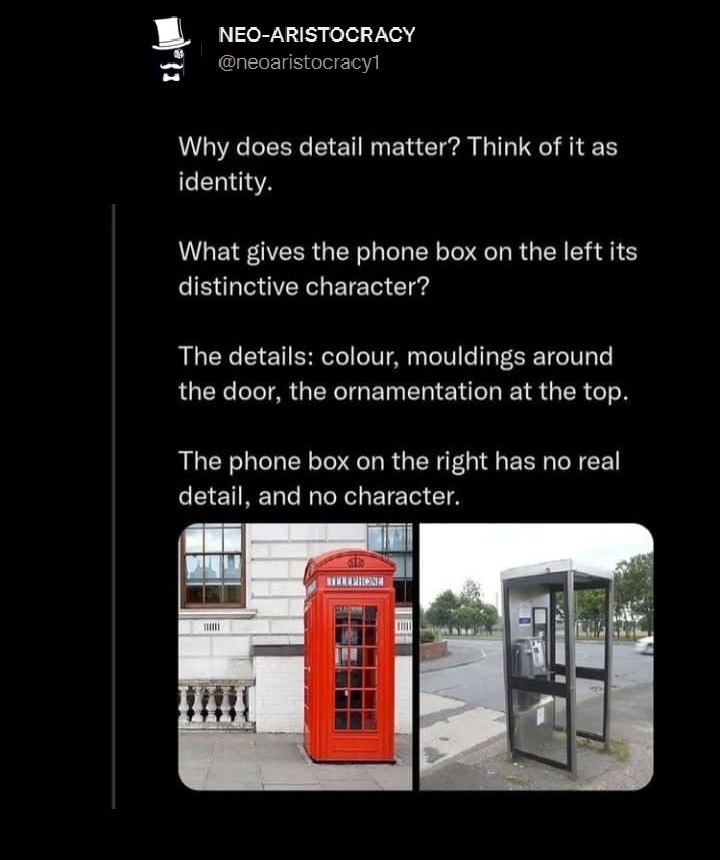

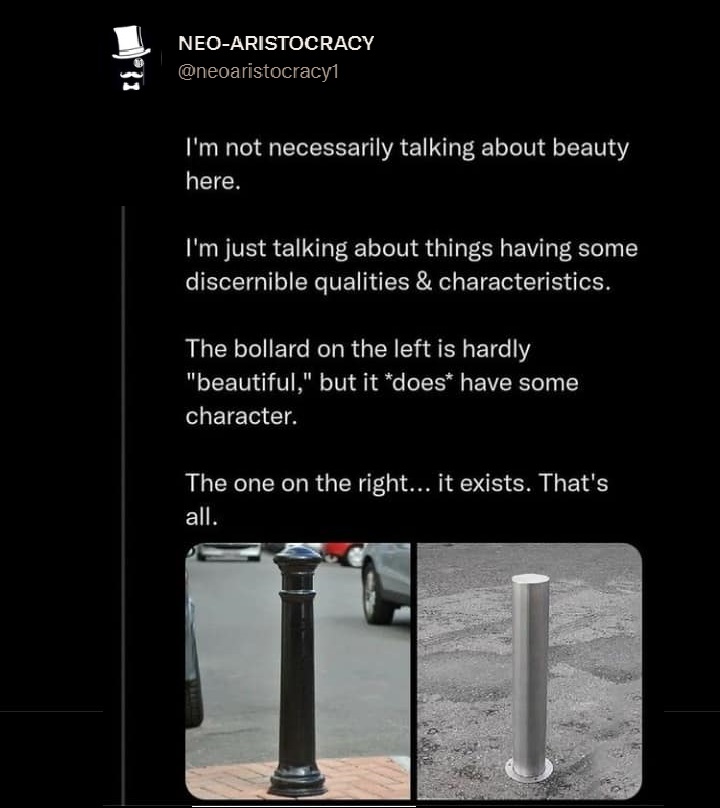
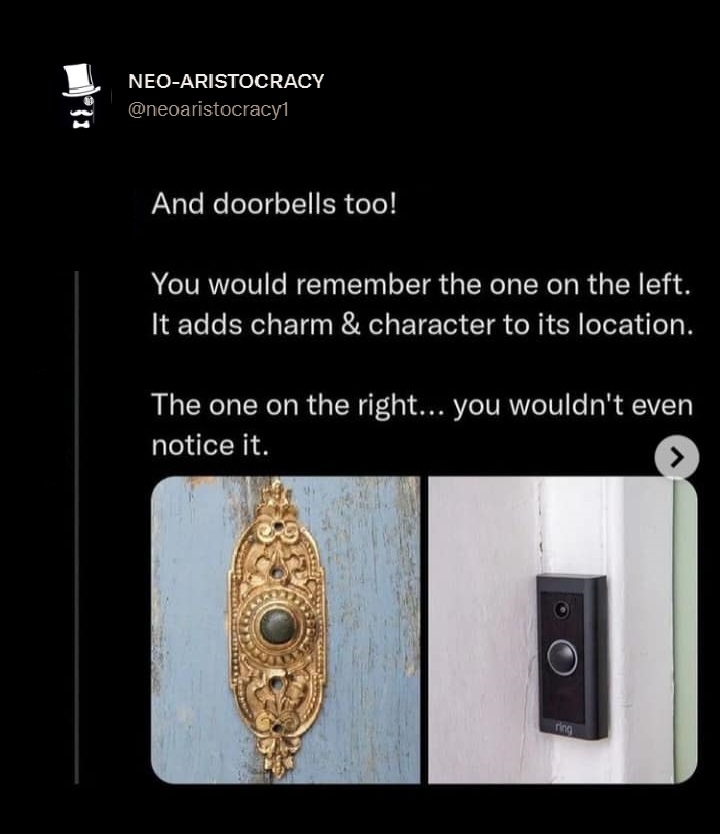
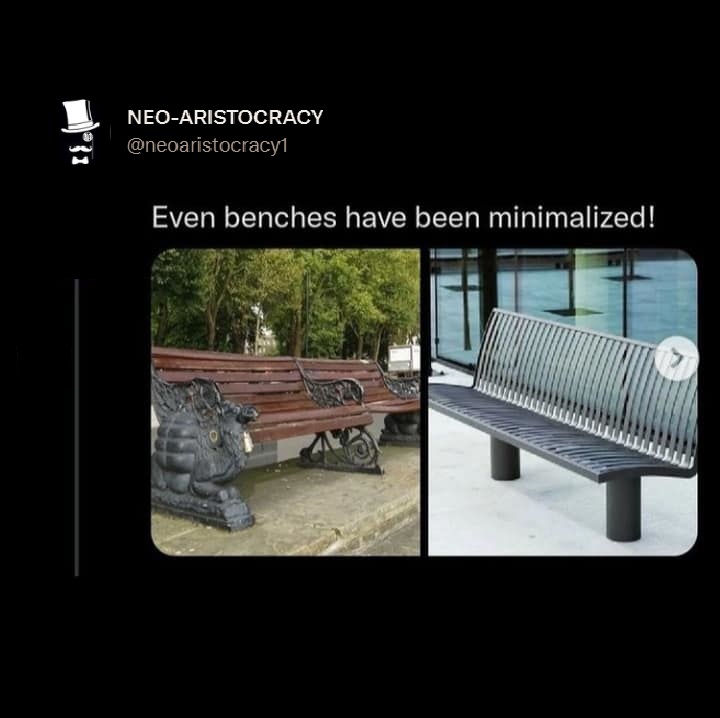


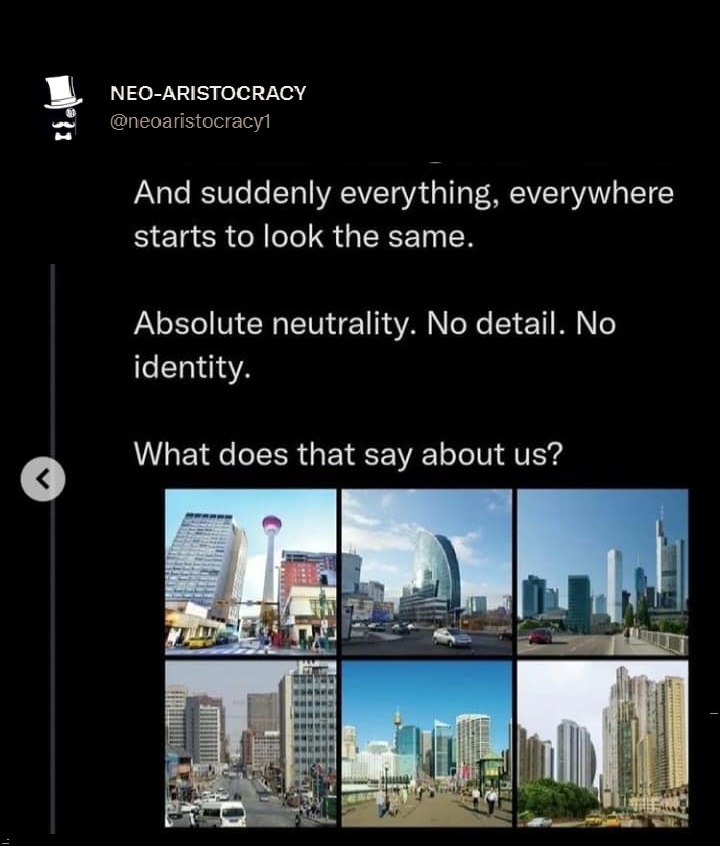
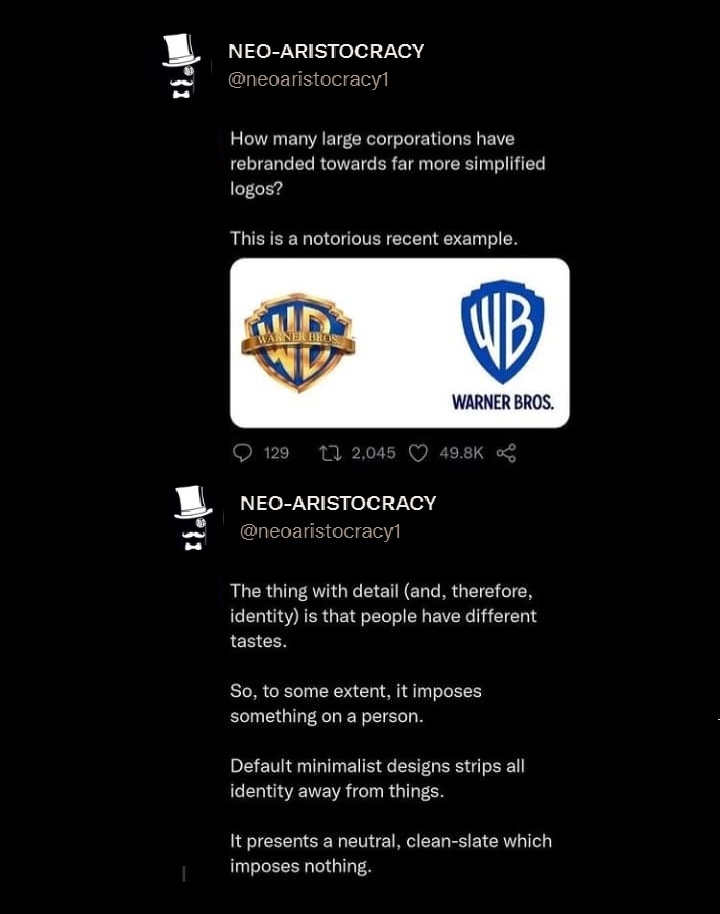
In conclusion the war of Aesthetics is for the large part not unseen but the unknown, the unspoken war on the western ideal and in turn the west itself. We can and we must resist, it can be as simple as dressing beautiful or going that extra mile and creating something marvelous. Support the classic arts, buy better, demand better, be better.